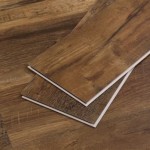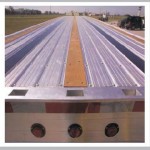Tools Needed for Laminate Flooring Installation
Installing laminate flooring, while often considered a manageable DIY project, requires the right tools for a smooth, efficient, and professional-looking result. Attempting to proceed without the necessary implements can lead to frustration, wasted materials, and ultimately, a poorly installed floor. This article outlines the essential tools required for a successful laminate flooring installation, explaining their function and highlighting key considerations in their selection.
Measuring and Planning Tools
Accuracy is paramount in any flooring project. Precise measurements and careful planning prevent material waste and ensure a visually appealing, uniform finish. This phase relies heavily on specific measuring and marking tools.
Measuring Tape: A durable measuring tape, preferably at least 25 feet long, is indispensable for determining the dimensions of the room and calculating the required amount of flooring. Look for a tape measure with a clearly marked scale, a wide blade for stability, and a locking mechanism to hold the measurement securely.
Pencil and Notepad: A pencil and notepad are crucial for recording measurements, sketching room layouts, and noting the placement of obstacles such as doorways, pipes, and cabinets. Keeping meticulous notes will prevent errors and streamline the cutting process.
Square: A square, either a speed square or a combination square, is essential for creating accurate right angles when cutting boards to fit corners and edges. This tool ensures that cuts are precise, leading to tight seams and a professional appearance.
T-Square or Chalk Line: A T-square or chalk line is useful for marking long, straight lines across the laminate flooring, particularly when cutting multiple boards simultaneously. This ensures consistency and accuracy in the cuts.
Laser Level (Optional): While not strictly essential, a laser level can be beneficial for ensuring the subfloor is level before installation begins. Significant unevenness in the subfloor must be addressed before laying the laminate to avoid problems such as squeaking and uneven wear.
Moisture Meter: Measuring the moisture content of both the subfloor and the laminate flooring is critical. Excess moisture can lead to warping, buckling, and mold growth. A moisture meter provides a quick and accurate reading, allowing the installer to ensure that both materials are within the recommended moisture range before proceeding.
Cutting Tools
Laminate flooring requires precise cuts to fit around irregular shapes and along walls. Selecting the appropriate cutting tools directly impacts the ease and accuracy of the installation process.
Laminate Flooring Cutter: A laminate flooring cutter, also known as a guillotine cutter, is specifically designed for cutting laminate planks quickly and cleanly. This tool uses a sharp blade to slice through the flooring material with minimal chipping or splintering. It is particularly useful for straight cuts and can significantly speed up the installation process. The blade should be regularly inspected and sharpened to maintain optimal performance.
Jigsaw: A jigsaw is an essential tool for making curved or intricate cuts around pipes, door frames, and other obstacles. Using a fine-tooth blade specifically designed for laminate flooring will minimize chipping and ensure a clean cut. Variable speed settings on the jigsaw allow for greater control and precision.
Circular Saw: A circular saw is a versatile tool that can be used for making long, straight cuts in laminate flooring. When using a circular saw, it is crucial to use a blade designed for cutting laminate to prevent chipping and splintering. Score the surface of the laminate with a utility knife before cutting to further minimize damage.
Utility Knife: A utility knife with a sharp, replaceable blade is useful for scoring the laminate flooring before snapping it along a straight line. This technique is particularly effective for thinner laminate planks and can minimize chipping compared to using a saw. Multiple passes with the utility knife are typically required for a clean break.
Hole Saw Kit: For cutting circular holes for pipes or other fixtures, a hole saw kit is indispensable. Select a hole saw that matches the diameter of the pipe or fixture. Using a pilot drill can help guide the hole saw and prevent it from wandering.
Installation Tools
Beyond measuring and cutting, specific tools are needed to properly install and secure the laminate flooring planks, ensuring a tight, uniform, and professional-looking finish.
Tapping Block: A tapping block is a small, rectangular block of wood or plastic used to gently tap the laminate planks into place without damaging the edges. This tool distributes the force evenly, preventing chipping and ensuring a tight fit between planks. Different tapping blocks are available, some designed for specific laminate flooring thicknesses.
Pull Bar: A pull bar is a specialized tool used to pull the final row of laminate planks into place along the wall. It features a hooked end that engages with the plank and a padded surface to protect the wall from damage. A pull bar is essential for ensuring a tight fit in areas where the tapping block cannot be used.
Spacers: Spacers are small wedges or blocks used to maintain a consistent expansion gap between the laminate flooring and the walls. This gap allows the flooring to expand and contract with changes in temperature and humidity, preventing buckling and warping. Spacers are typically removed after the installation is complete and covered by baseboards or trim.
Hammer: A hammer is used in conjunction with the tapping block and pull bar to gently tap the laminate planks into place. A rubber mallet can also be used to minimize the risk of damage. Use short, controlled taps rather than forceful blows.
Knee Pads: Installing laminate flooring requires spending extended periods on your knees. Knee pads provide cushioning and support, reducing strain on the joints and improving comfort during the installation process. Investing in a good pair of knee pads is essential for preventing discomfort and fatigue.
Safety Equipment
Safety is paramount during any DIY project. Protecting yourself from potential hazards associated with laminate flooring installation is crucial.
Safety Glasses: Safety glasses are essential for protecting your eyes from dust, debris, and flying projectiles when cutting or hammering laminate flooring. Choose safety glasses that fit comfortably and provide adequate coverage.
Dust Mask or Respirator: Cutting laminate flooring can generate a significant amount of dust. A dust mask or respirator is necessary to protect your lungs from inhaling harmful particles. A respirator provides a higher level of protection and is recommended for individuals with respiratory sensitivities.
Gloves: Gloves protect your hands from splinters, cuts, and abrasions when handling laminate flooring planks. Choose gloves that provide a good grip and allow for dexterity.
Subfloor Preparation Tools
A proper subfloor is essential for a successful laminate flooring installation. Preparing the subfloor may require additional tools depending on its condition.
Leveling Compound: If the subfloor is uneven, a leveling compound may be necessary to create a smooth, even surface for the laminate flooring. A leveling compound is a self-leveling mixture that fills in low spots and evens out imperfections. A trowel is used to spread the leveling compound evenly across the subfloor.
Scraper: A scraper is used to remove old adhesive, paint, or other debris from the subfloor. A floor scraper with a long handle can make this task easier and more efficient.
Vacuum Cleaner: A vacuum cleaner is essential for removing dust, dirt, and debris from the subfloor before installing the laminate flooring. A shop vacuum is particularly useful for this task as it is designed to handle larger debris and dust particles.
Self-Leveling Underlayment (Optional): Depending on the existing subfloor, a self-leveling underlayment may be required to provide a smooth, stable base for the laminate flooring. This is particularly important if the subfloor is significantly uneven or damaged.

How To Install Laminate Flooring On Your Own Diy Hq Longwood Fl

Guide To Fitting Laminate Free Samples

The Laminate Flooring Tools Needed For Installing This

Tools Needed To Install Laminate Flooring Find The Home Pros

See Which Laminate Flooring Tools And Cutters I Have In My Kit

8 Essential Tools For Laminate Flooring Installations The Family Handyman

Pergo Wheaton Oak Our Basement Bar Laminate Flooring Construction2style

5 Diffe Tools You Can Use To Cut Laminate Flooring

All The Tools Needed For Installing Hardwood Flooring

Wood Laminate Flooring Installation Floor Fitting Kit Home Tool Set 20 Spacer Diy At B Q
Related Posts








